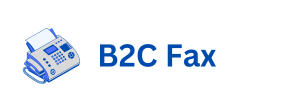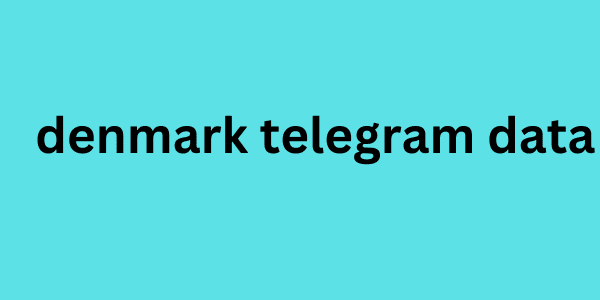Emails are part of our daily work, especially in sales or marketing roles. But do we really know which types we’re dealing with? Each type of email serves a different purpose and requires a unique approach.
Today, we’ll take a look at 10 different types of emails and some real-world examples to help you out.
We’ll also share the essential elements that will help you increase your email engagement.
What Are the Different Types of Email?
We are all familiar with various types of emails, from welcoming new users to resetting passwords.
As we said, each genre has a unique purpose and requires specific language, tone, and timing.
Organizing these emails according to their role in the customer journey helps ensure effective and timely communication denmark telegram dataa strategy often used in lifecycle marketing.
This way we avoid sending out initial emails to our loyal customers.
Here are the 10 main types and subtypes of emails you can send to your customers:
1. Welcome Emails
- Thank You Emails (Simple Welcome)
- Incentive Welcome Email
- Educational Welcome Email
- Welcome Email Series
2. User Education Emails
- Product/Service Tour Email
- Value Proposition Email
- Step by Step Guide Email
3. Bulletins
- Informative Bulletin
- Promotion Bulletin
- Company Update Bulletin
- Curated Content Bulletin
4. Promotional Emails
- Discount Offers Emails
- Limited Time Sale Emails
- Flash Sale Emails
5. Seasonal Emails
- Seasonal Emails
- Holiday Emails
- Event Based Emails
- Special Day Emails
6. Transactional Emails
- Order Confirmation Emails
- Shipping Confirmation Emails
- Cart Reminder Emails
- Password Reset Emails
- Account Activation Emails
- Subscription and Renewal Reminder Emails
- Appointment Reminders
7. Social Proof Emails
- User Generated Content (UGC) Emails
- Customer Feedback Email
- Case Studies Email
- Customer Highlights Emails
8. Announcement Emails
- New Product or Service Launch
- Event Announcements
- Policy or Terms Updates
- Partnership Announcements
9. Re-engagement/Recovery Emails
- “We Miss You” Emails
- Feedback Request Emails
- Survey Emails
- FOMO Marketing Emails
10. Internal Emails
- Company Updates
- Project Updates
- HR Announcements
10 Different Types of Emails and Why They Are Effective
1. Welcome Emails
Welcome emails are the first messages you send to your new customers or subscribers. These emails are important because they represent the first impression someone gets of your company.
According to Campaign Monitor , welcome emails are read 42% more than regular emails. That’s a big deal! This means that when people sign up, they’re more interested in what you have to say.
These emails are an opportunity to say “thanks for signing up” and tell customers what they can expect from you. You can set the tone for your other emails.
Here are the types of welcome emails you can send to your subscribers:
- Thank You Emails (Simple Welcome): This email includes a warm welcome, a thank you note for the subscription, and a brief introduction about your business.
- Welcome Email with Incentive: This starts with a greeting and thank you note, followed by a special offer or discount code that the subscriber can use.
- Educational Welcome Email: This type of email begins with a greeting and provides helpful information or tips about your product or service.
- Welcome Email Series: This is a series of emails sent over time, each with a different purpose – thanking the subscriber, offering incentives, providing information, and introducing your company in detail.
Incentive Welcome Email Example from TheRealReal:
The main elements that TheRealReal uses in its welcome email are:
- Special Membership: This welcome email highlights the “new member special” feature, giving the recipient a sense of special treatment.
- Instant Offer: Offering a discount or deal at the beginning of an email rewards people who sign up and encourages the recipient to make their first purchase.
- Warm Welcome and Thank You: Including a welcome note and thank you message creates a positive impression and shows that the company cares about its community.
- Brand Commitment and Values: The email effectively shares the brand’s commitment to quality and sustainability buy email databases and unlock unlimited marketing potential letting customers know they’re supporting a company that aligns with their values.
Why It’s Effective: This welcome email makes the new member feel special, valued, and informed, which is exactly what an effective welcome email wants.
Bonus: If you’re using Shopify, you can use Shopify’s welcome automation to choose from three effective options: a simple one-time welcome, a series of timely reminders, or a series enhanced with brand stories.
2. Welcome Emails
Welcome emails are crucial for guiding new customers or users through the early stages of engaging with your product or service. The goal of these emails is to educate users and help them get the most out of your product or subscription.
An effective fulfillment process can significantly reduce customer churn and increase customer satisfaction and loyalty.
Types of welcome emails you can send to users:
- Product/Service Tour Email:This email serves as a virtual tour of your product or service, highlighting key features and benefits. It’s designed to help new users directly discover how to use your offering and its value.
- Value Proposition Email: This email includes a message that emphasizes that the customer made the right decision. It details the unique benefits and selling points of your product or service, and aligns it with customer needs and expectations.
- Step-by-Step Guide Email:For more complex products or services aol email list a step-by-step guide can be invaluable. Adding images or links to video tutorials can increase the effectiveness of this email by providing clear, easy-to-follow instructions.
Welcome Email/Step by Step Guide Example from Miro:
The main elements Miro uses in his welcome email are:
- Simplicity: Email is very straightforward and accessible to new users. Miro avoids complexity so that newcomers don’t feel overwhelmed.
- Actionable Links: Miro includes direct links in the email, such as to create their first board, allowing users to start using the product immediately and reducing the barriers to engagement.
- Structured Steps: The email outlines clear, numbered steps to get you started.
Why it’s effective: Because it’s user-centric. It simplifies the onboarding process, encourages immediate product interaction, highlights critical features, and highlights the platform’s collaborative capabilities.
3. Bulletins
Newsletter emails are vital for engaging with audiences across industries like B2B and eCommerce. Newsletters help maintain customer engagement by delivering content that aligns with your audience’s interests and needs, and position your brand as a trusted source of information.
As highlighted by Zapier , newsletters are becoming increasingly popular among large businesses because they can reduce customer acquisition costs and provide a stable channel for direct customer interaction, regardless of fluctuating advertising costs or web traffic.
Here are the detailed newsletter email types you can include in your communication strategy:
- Informational Newsletters: These newsletters inform your audience about topics of interest, industry news, or helpful tips that fit their interests and needs.
- Promotional Newsletters: Aimed at driving sales and highlighting special offers, these newsletters promote your products or services and showcase featured products, bestsellers, or new arrivals. This format is very popular among ecommerce sites .
- Company Update Newsletters: These types of newsletters are great for building a community around your brand. Keep your audience in the loop by sharing behind-the-scenes stories, new hires, company successes, or upcoming projects.
- Curated Content Newsletters: A mix of articles, videos, podcasts, resources, and short commentary on why it should be consumed.
Promotional and Information Newsletter Example from Rains:
The key elements Rains uses in his newsletter are:
- Community Building: The newsletter starts by inviting new subscribers to join the Rains community, highlighting the benefits and exclusive content they will offer. This creates a welcoming atmosphere and encourages a sense of belonging.
- Brand Credibility: By highlighting their participation in Paris Fashion Week, the newsletter uses a major event to boost the brand’s credibility and prestige in the fashion industry.
- Product Highlights: The newsletter showcases Rains’ signature waterproof fabrics and new arrivals, introducing customers to unique product features.
Why it’s effective: Rains’ newsletter works because it makes its readers feel part of a community, highlights their participation in important events, and showcases the unique features of its products.


